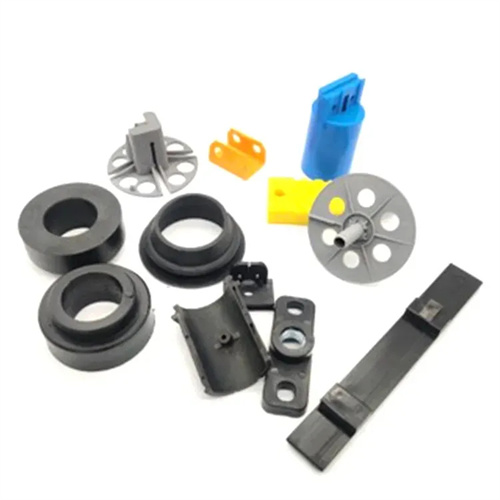Creation of injection molding gating system
The creation of an injection molding gating system requires a structural analysis of the plastic part. A preliminary plan is developed based on material properties and molding process requirements. The key to this stage is determining the location and number of gates. A mobile phone case made of ABS material required a surface free of gate marks. Analyzing the 3D model of the part, the technical team discovered that the rounded corners at the edges of the case had a uniform wall thickness (2mm) and were located away from the exterior surface, making them suitable for latent gates. Filling simulations using Moldflow software verified that a single gate achieved complete filling at an injection pressure of 150 MPa, with weld marks located in non-exterior areas (strength reaching 28 MPa). While dual gates could eliminate weld marks, they would increase post-processing steps. After comprehensive evaluation, a single gate solution was chosen, reducing production costs by 15%. For large parts, such as car bumpers, three to four gates were placed based on flow path analysis to ensure that the melt reaches the end of the cavity simultaneously within 20 seconds, thus avoiding uneven local cooling caused by prolonged filling times.

The runner design of the gating system must adhere to the principle of isobaric pressure, ensuring uniform melt distribution through a reasonable diameter gradient and layout. This step requires a combination of fluid dynamics calculations and empirical data. The main runner diameter is typically determined by the formula D = 0.2 × √G + 1.5 (G is the weight of the plastic part). For a 500g PP plastic bucket mold, the calculated main runner diameter is 10mm, but the actual design uses 11mm to allow for adjustment. The branch runners utilize a circular cross-section (which offers 30% less flow resistance than a trapezoidal cross-section). The diameter from the main runner to the gate decreases by 0.5mm per 100mm to ensure consistent pressure loss across each branch runner. In multi-cavity molds, the branch runners must adopt a balanced layout. For an 8-cavity connector mold, symmetrical design minimizes runner length deviation within 5mm. Combined with diameter fine-tuning (±0.3mm), the fill time difference between cavities has been reduced from 1.2 seconds to 0.3 seconds, and the product weight deviation is less than 0.5%.

Determining the gate form and size is a critical step in creating a gating system. Both filling efficiency and part appearance quality must be considered, and multiple solutions should be compared and tested if necessary. For transparent parts such as PC lenses, edge gates with a larger gate size (3mm diameter) are recommended to reduce birefringence caused by melt shear. For home appliance panels with extremely demanding appearance, a latent gate requires precise control of the distance between the gate and the part surface (0.5mm) to ensure that residual marks can be removed with light polishing after demolding. A cosmetics box lid mold determined the optimal gate parameters through testing: a fan-shaped gate with a width of 10mm and a thickness of 1mm. This achieved a weld mark strength of 32MPa (compared to the material’s inherent strength of 35MPa) and no noticeable appearance marks. Gate size must be verified and adjusted through trial molds. In one case, an initial gate diameter of 2mm resulted in insufficient filling. Increasing it to 2.5mm resolved the issue, but an oversized gate (3mm) prolonged the holding time, ultimately determining 2.5mm as the optimal size.

The cooling and venting design of the gating system must be developed in tandem with the runner structure to prevent production stability from being impacted by excessive runner temperatures or poor venting. Runner cooling typically utilizes a combination of an annular water channel surrounding the main runner and a linear water channel beneath the branch runner. In one mold, an 8mm diameter annular water channel surrounding the main runner bushing stabilized the runner temperature at 60±2°C, a 29% reduction from 85°C without cooling, and reduced the aggregate removal force from 50N to 20N. Venting grooves, 0.02mm deep (for PP material) and 5mm wide, are located near the runner end and gate to ensure that gases within the runner can escape before the melt reaches the mold. In a gear mold made of PA66, bubbles formed at the runner end due to poor venting. Adding venting grooves eliminated the bubbles and reduced pressure fluctuations within the runner from ±10MPa to ±3MPa. The coordinated design of the cooling and venting systems reduced the molding cycle time for one mold from 45 seconds to 35 seconds, improving production efficiency by 22%.

Optimizing the gating system requires iterative adjustments based on mold trial feedback, with dimensional parameters and structural details refined based on actual production data. During the initial mold trial of an automotive instrument panel mold, stress concentration near the gate caused cracking in the plastic part during assembly. By increasing the gate diameter from 3mm to 4mm and adding a radius transition (R2mm) at the gate, the stress value was reduced from 80MPa to 50MPa (material yield strength 60MPa), and the cracking issue was resolved. Runner balance is often adjusted using the “plugging method.” For a 12-cavity mold, the runner inlets of some cavities were plugged, and the fill time of each cavity was tested. The corresponding runner diameters were adjusted accordingly, improving the balance to 95%. During the mold trial, attention must also be paid to the difficulty of removing gate slurry. In one case, a square gate resulted in slurry residue. Switching to a round gate reduced the removal force by 40%, making it suitable for automated production. After 3-4 rounds of trial mold optimization, the pouring system can reach the optimal state. After system optimization, the production qualification rate of a complex mold increased from 75% to 98%, and the production efficiency increased by 30%.
